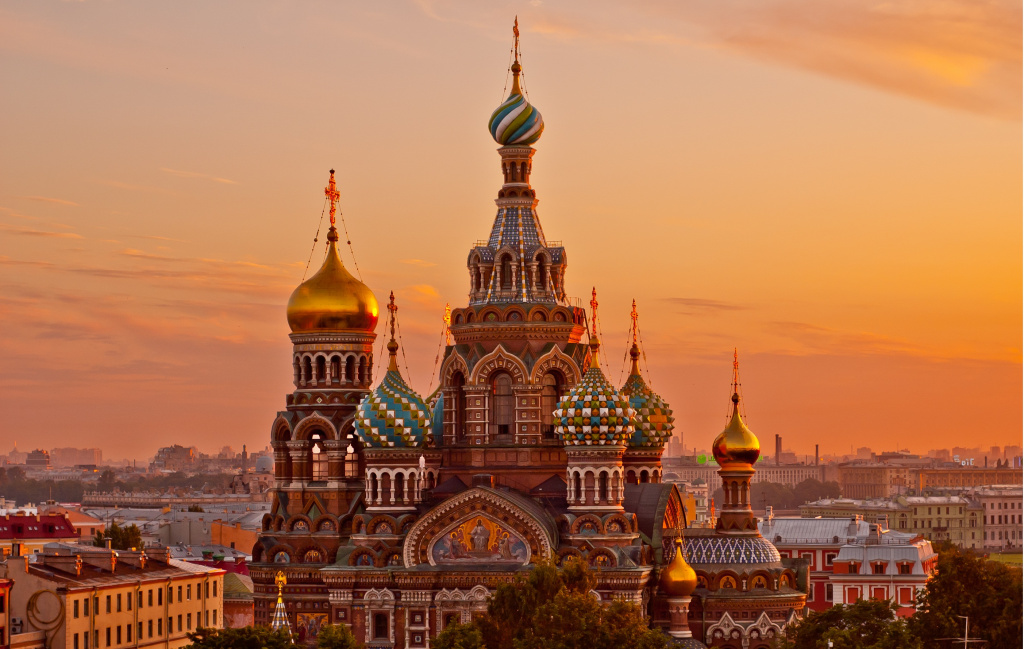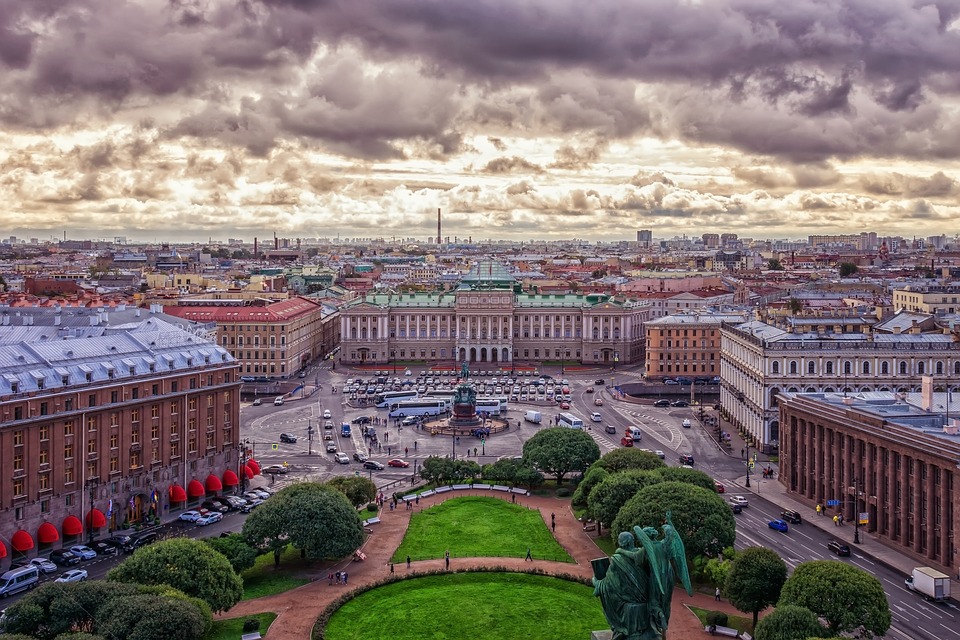-
St. Petersburg was founded in 1703 by Russia’s first Emperor Peter I. In 1712–1918, it was the capital of Russia. In 1914, the city got the name of Petrograd, while in 1924 it was renamed as Leningrad. It got its historic name back only in 1991. Nowadays, it is Russia’s second largest city after Moscow in terms of population.
-
The Neva is one of the most affluent rivers in the European part of Russia. When it comes to average annual flow, it is only behind the Volga, the Pechora, the Northern Dvina and the Kama. The Neva flows out of Lake Ladoga. Over 30 rivers flow into this lake, however it is only the Neva that starts there.
-
St. Petersburg is located almost precisely at 60°00′N and 30°00′E. The main astronomical observatory of the Russian Academy of Science is located in Pulkovo, a suburb of St. Petersburg, and bears its name. The meridian upon which the observatory is locates is eponymous with the suburb and was used as a zero meridian in the Russian Empire, instead of the Greenwich.
-
St. Petersburg is the world’s largest, most northern city: the 60th parallel, on which the city lies, passes through Greenland, Anchorage, Alaska, Magadan, and Oslo, the capital of Norway. The city is famed for its white nights, a major tourist attraction. However, geography-wise the white nights latitude is north of 60°34′, which is almost a whole degree away from St. Petersburg.

-
The Blue bridge over the Moika River is the widest in the world. It was constructed in the 19th century by William Heste, a Russian architect. The width of the bridge is 97.3 metres. It got its name from its wooden predecessor, which was painted blue. This bridge is all but invisible, as it became an integral part St. Isaac’s Square and barely stands out.
-
The subway in St. Petersburg is the deepest in the world, with tunnels located 70–80 metres below the ground. The deepest station is Admiralteiskaya, with a record of 86 metres.
-
St. Petersburg is 317 years old, however its oldest artefacts are Egyptian sphynxes in the University Embankment. Their approximate age is 3,500 years. The pink granite sphynxes were discovered during archaeological excavation in the Mortuary Temple of Amenhotep III in Thebes. The sphynxes were brought to St. Petersburg through the efforts of Aleksandr Murav’ev, a traveller and member of the Academy of Sciences. He set off on a pilgrimage and saw the sphynxes in Alexandria, which were brought there for sale.
-
The Lakhta Center skyscraper (462 m) became the tallest building in Europe as of October 2017. The previous record setter is the Federation Tower in Moscow (374 m). Construction of Lakhta Center is completed. At this moment, works on its interiors and décor are under way.
-
Peter and Paul Fortress is St. Petersburg’s oldest architectural structure. It was founded on 27 May 1703, which is used as the city’s foundation date. The Fortress was never involved in any battle, though its garrison was on high alert for centuries and was initially created to defend the lands Russia acquired in the Northern War. At the same time, it has been perfectly preserved and now is a truly unique historical monument.
-
St. Isaac’s Cathedral (constructed in 1818–1858 by Auguste de Montferrand) is the biggest cathedral in Russia and the fourth biggest in the world (it’s the world’s third largest among the single-domed ones). Its colonnade is a popular viewpoint, one of the tallest in St. Petersburg.

-
Nevsky Prospekt is the city’s main street and its warmest part. Compared to suburbs, its temperature is 2–3 degrees higher in summer and 10–12 degrees higher in winter.
-
Architect Rossi Street (Ulitsa Zodchego Rossi, previously known as Teatralnaya Ulitsa) is unique because of its proportions: it’s 22 m wide, while its buildings are 22 m tall. The length of the street is precisely 10 times bigger (220 m). Besides, it looks like there’s just one building on each side of the street, while in reality it’s five different buildings with the same design and a shared façade.
- Alexander Column in the Palace Square weighs 613 tonnes. It stands under its own weight and took less than 2 hours to get installed. The Column was put in the square in 1834 to commemorate Russia’s victory over Napoleon and was purposefully designed to be taller than the Vendôme Column in Paris. This is the world’s tallest monument among those out of solid granite and third tallest victory column. The column shaft is the tallest and heaviest solid block ever installed as a column or an obelisk and one of the biggest monoliths ever displaced by people (the fifth biggest of all times and the second biggest in modern age – after the Thunder Stone under the Bronze Horseman).




